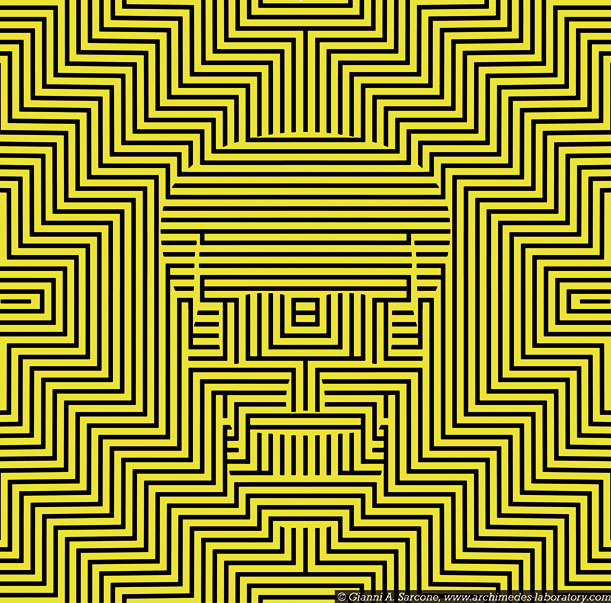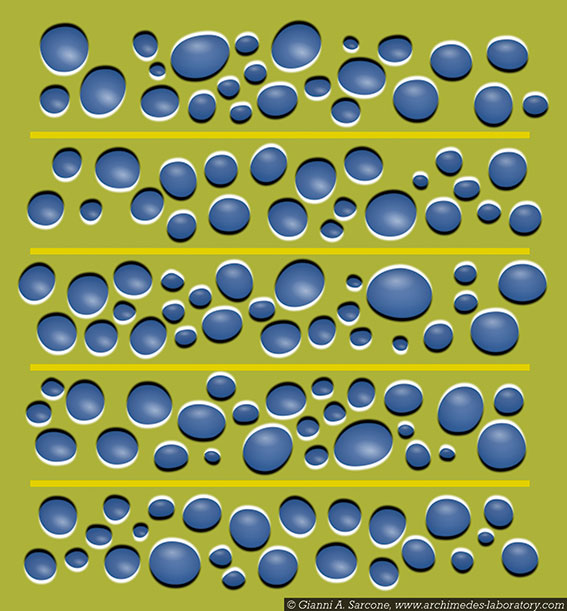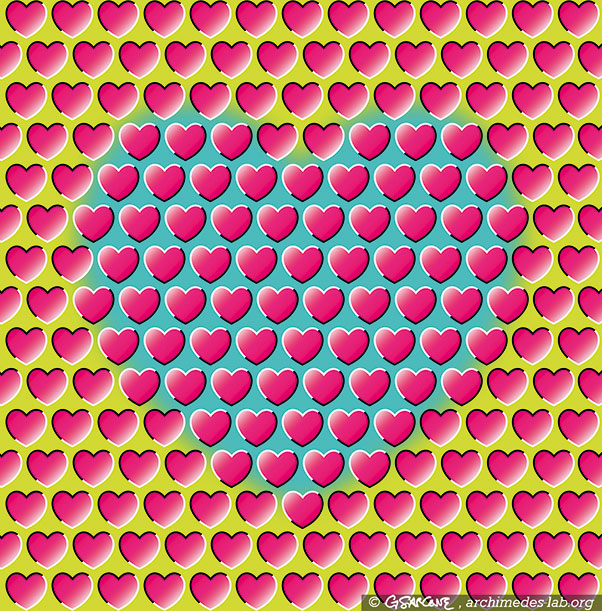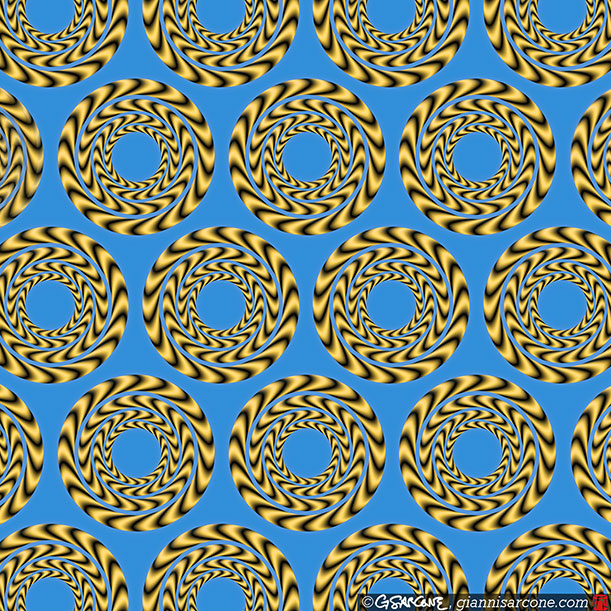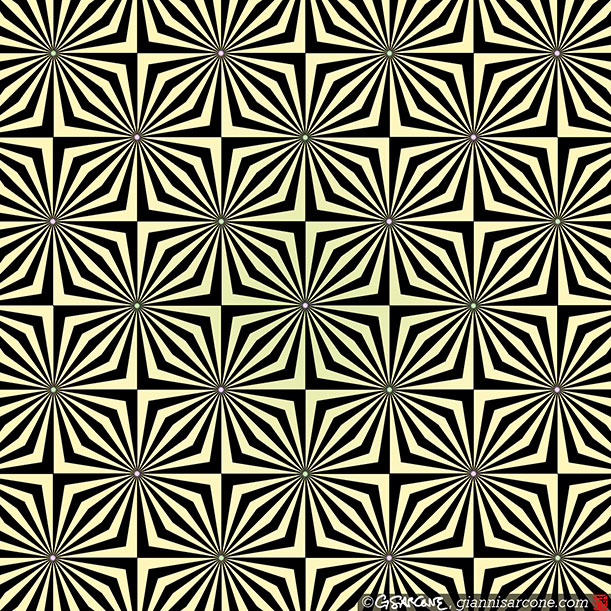These Patterns Move, But It’s All an Illusion
What happens when your eyes and brain don’t agree?
/https://tf-cmsv2-smithsonianmag-media.s3.amazonaws.com/filer/20130822105015Gianni-Sarcone-Flashing-Star-web.jpg)
Focus on the ball at the center of the image above. The scene appears to vibrate. If you move your head slightly forward and backward, the color fields of the rosette appear to pulsate.
Scientists have several theories about how our eyes and brain collaborate to create the illusion of movement—although the precise neural mechanics remain unknown. Still, what we do know makes it possible for artists such as myself to design visual pranks.
This vibrating rosette combines several illusory effects. To begin with, when we fixate on a pattern, it momentarily remains on our retinas as an after-image. One theory is that small, involuntary eye movements cause this ghost image to overlap with the image on the page. The result is what’s called a moiré effect: similar, repetitive patterns merged together at slightly different angles, creating a rippling effect. I enhanced this effect by adding two high-contrast colors, blue and yellow.
Also, when we approach an object, our brain normally makes adjustments so that the object’s size and brightness appear to remain constant. But when you move your head back and forth, the alternating dark and light patterns in my rosette seem to change in both size and brightness. One possible explanation is that our visual system cannot bring the blurred boundaries within the image into focus, and our brain cannot adjust.
Seeing is believing—except when the mind can be tricked into believing what it sees.
